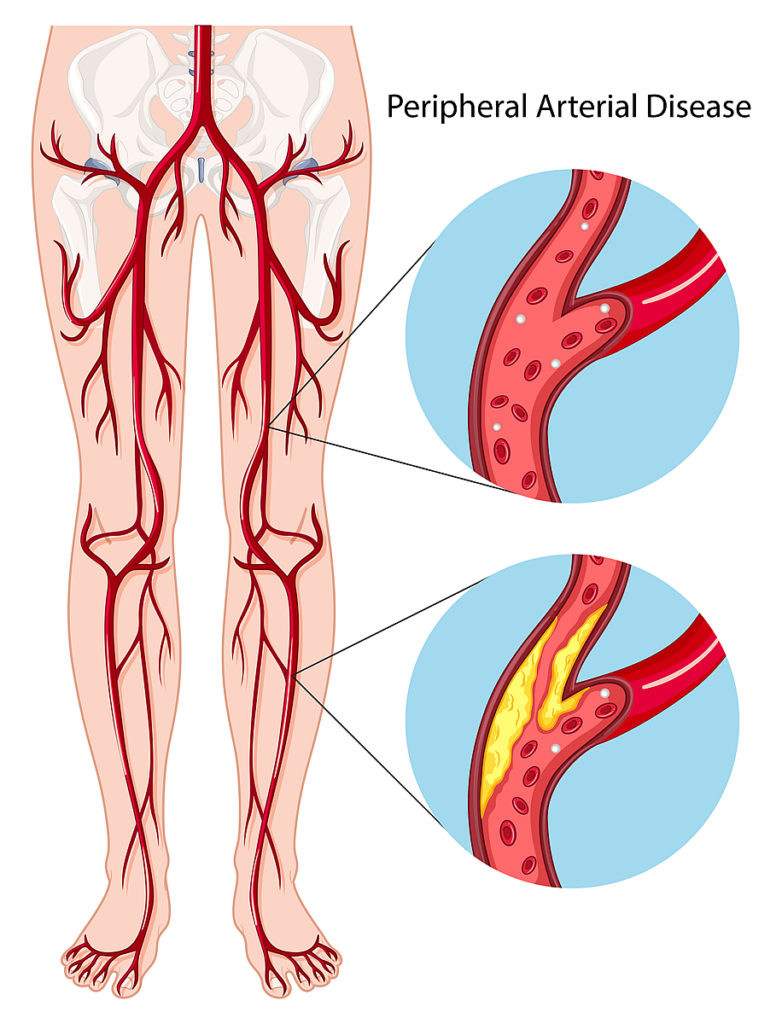A nurse is reviewing the laboratory results for a male adult client who is at risk for peripheral arterial disease due to atherosclerosis. The nurse should identify which of the following results places the client at risk :
Triglycerides : 130 mg/dL
HDL : 84 mg/dL
Blood glucose : 92 mg/dL
LDL : 172 mg/dL
The Correct Answer is D
Choice A reason : The triglyceride level of 130 mg/dL is within the normal range, which is less than 150 mg/dL for adults. Therefore, this result does not place the client at risk for peripheral arterial disease.
Choice B reason : An HDL level of 84 mg/dL is considered good as it is higher than the minimum recommended level of 40 mg/dL for males and 50 mg/dL for females. Higher levels of HDL are protective against heart disease.
Choice C reason : A blood glucose level of 92 mg/dL is within the normal fasting range of 70 to 99 mg/dL. This indicates that the client does not have diabetes, which is a risk factor for peripheral arterial disease.
Choice D reason : An LDL level of 172 mg/dL is considered high since the optimal level for LDL is less than 100 mg/dL. High levels of LDL cholesterol can lead to atherosclerosis, increasing the risk for peripheral arterial disease.
Nursing Test Bank
Naxlex Comprehensive Predictor Exams
Related Questions
Correct Answer is A
Explanation
Choice A reason: Walking is a highly beneficial activity for individuals with peripheral vascular disease (PVD). It helps improve circulation, which can be compromised in PVD due to narrowed or blocked blood vessels. Regular walking can lead to the development of collateral circulation, which is the formation of new blood vessels that bypass the blockages and improve blood flow to the affected areas. This can help alleviate symptoms such as pain and cramping during walking, known as claudication. Walking should be done at a pace that is comfortable and should be stopped if pain occurs. Over time, walking can increase the distance a person with PVD can walk without pain.
Choice B reason: Compression stockings are often recommended for individuals with PVD to help improve blood flow. Knee-length stockings exert pressure on the lower legs, helping to reduce edema and discomfort associated with PVD. They can also help prevent deep vein thrombosis, a potential complication of PVD.
Choice C reason: Elevating the legs can help reduce swelling and improve venous return in clients with PVD. It is recommended to elevate the legs above the level of the heart to maximize the effect. This can be done by placing pillows under the legs while lying down.
Choice D reason: Shopping for shoes in the morning is advised because feet can swell throughout the day, especially in clients with PVD. Fitting shoes in the morning can help ensure a more accurate fit, reducing the risk of pressure points that could lead to skin breakdown and ulcers.

Correct Answer is A
Explanation
Choice A reason : The therapeutic INR range for a patient on Warfarin, especially for conditions such as atrial fibrillation, venous thromboembolism, and for the prevention of thrombosis in patients with prosthetic heart valves, is typically 2.0-3.0. This range balances the risk of clotting with the risk of bleeding. An INR of 2.0-3.0 means that the blood is taking twice to three times as long as normal blood to clot, which is the desired effect of the medication in preventing harmful clots.
Choice B reason : An INR range of 4.0-5.0 is generally considered too high for most therapeutic purposes and increases the risk of bleeding complications. This range might be appropriate in very specific clinical situations, such as for patients with mechanical heart valves who may require a slightly higher INR, but it is not the standard therapeutic range.
Choice C reason : An INR range of 1.0-2.0 is below the therapeutic range for patients on Warfarin. This range would not provide sufficient anticoagulation and would leave the patient at risk for thrombotic events.
Choice D reason : An INR range of 3.0-4.9 is higher than the standard therapeutic range and could lead to an increased risk of bleeding. While some patients with mechanical heart valves in the mitral position may require an INR up to 3.5, an INR higher than this is usually not necessary and could be dangerous.
Whether you are a student looking to ace your exams or a practicing nurse seeking to enhance your expertise , our nursing education contents will empower you with the confidence and competence to make a difference in the lives of patients and become a respected leader in the healthcare field.
Visit Naxlex, invest in your future and unlock endless possibilities with our unparalleled nursing education contents today
Report Wrong Answer on the Current Question
Do you disagree with the answer? If yes, what is your expected answer? Explain.
Kindly be descriptive with the issue you are facing.
